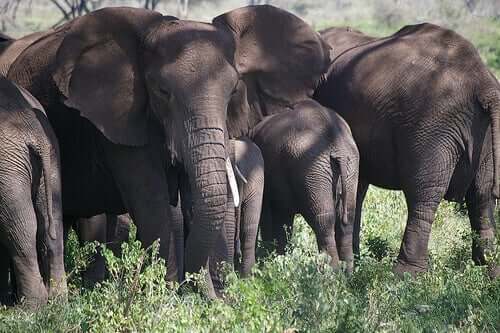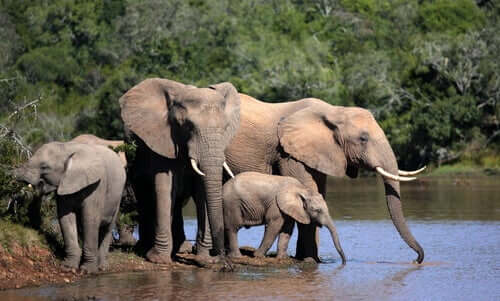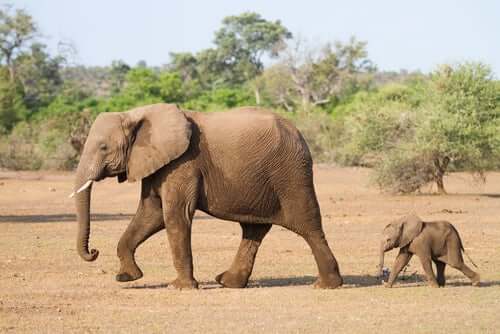Social Structures of Elephant Herds

Examining the social structures of elephant herds is very interesting, which is why many researchers are amazed by it. Let’s see why.
The social structure of elephant herds
The social structure of elephants is very complex and quite different from other animal herds. For example, males live in one herd while females live in another.

Females live in the same herd all their lives, therefore they form close bonds with all their closest relatives. They’re also very social animals, and it’s not uncommon to see them playing with each other.
You can sometimes see them squirting water at each other. However, some researchers argue that this is a cooling technique. However, it does look like they’re playing a game, so you could say that elephants are great fun!
Females are not only social with each other, but also with others outside their herd, including males. When a female joins a male herd, she’s welcomed and is allowed to stay for a while without problems.
This happens when a member of the herd wants to leave the group and venture out on her own. If she ever wants to return, she’ll be welcomed back. An elephant’s memory is astounding. They remember and recognize who belongs to their herd and who doesn’t.
Males in elephant herds
Males aren’t as social as females, and prefer to live in isolation. They’re known to form single herds. They only tend to socialize when they want a partner and, once they get one, they return to their herd. The older ones tend to go around the edges while the younger ones are in the middle as a symbol of protection.
It’s fairly common for male elephants to leave the herd for a couple of days and then return. Every time they leave, they leave for a little longer. When they reach approximately 14 years of age they no longer return to the herd.
One of the reasons this happens is because herd leadership is a constant struggle all the time. That’s why those who don’t succeed prefer to venture out on their own.
Elephant curiosities
There are many other curiosities surrounding elephants that attract our attention. For example:

- They’re emotional. Elephants cry just like we do, especially when a baby is born or a member of the herd dies. They have feelings similar to ours, which they demonstrate with pain and tears.
- Helping their young. When a baby elephant is born, the entire herd helps to raise it. If for some reason the mother dies, all members of the herd will make sure the baby survives.
- They love to play. While they may seem serious, especially the males, they’re not all that serious. They’re very playful animals who like to paddle and splash around in the water. However, if the herd is in danger or food becomes scarce, their character changes.
- They’re intelligent. The saying “you have a memory like an elephant” is very true. Researchers and scientists have always studied their memory and intelligence as it’s an intriguing subject yet to be fully discovered. Their brain weighs about thirteen pounds and they can identify themselves in a mirror. Incredible, right?
We hope that we’ve provided you with enough information about this fascinating animal that intrigues many and surprises others.